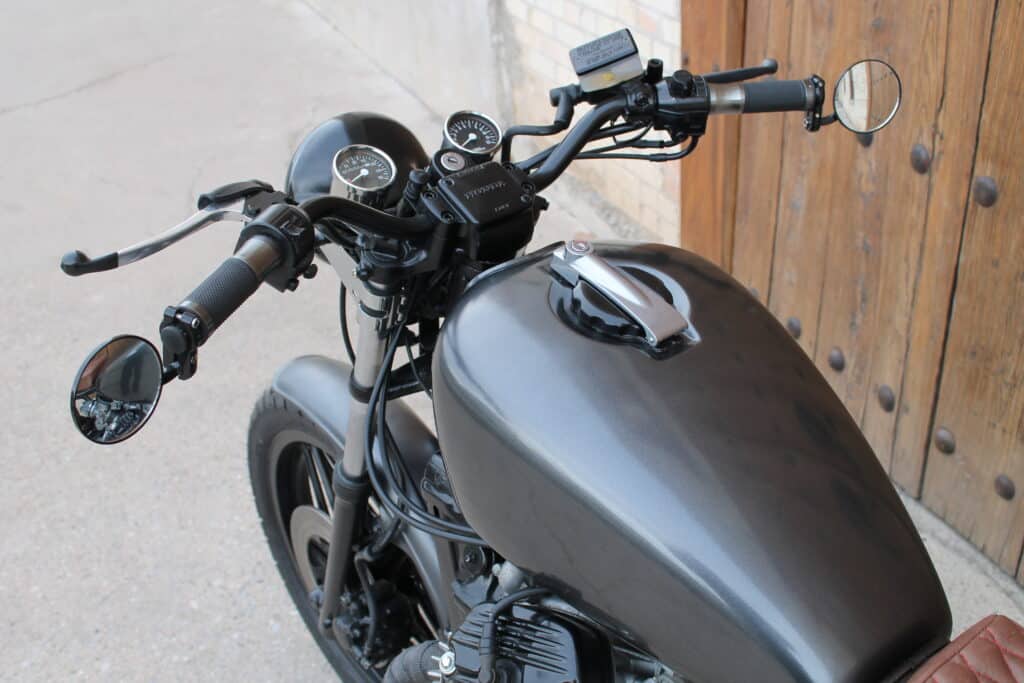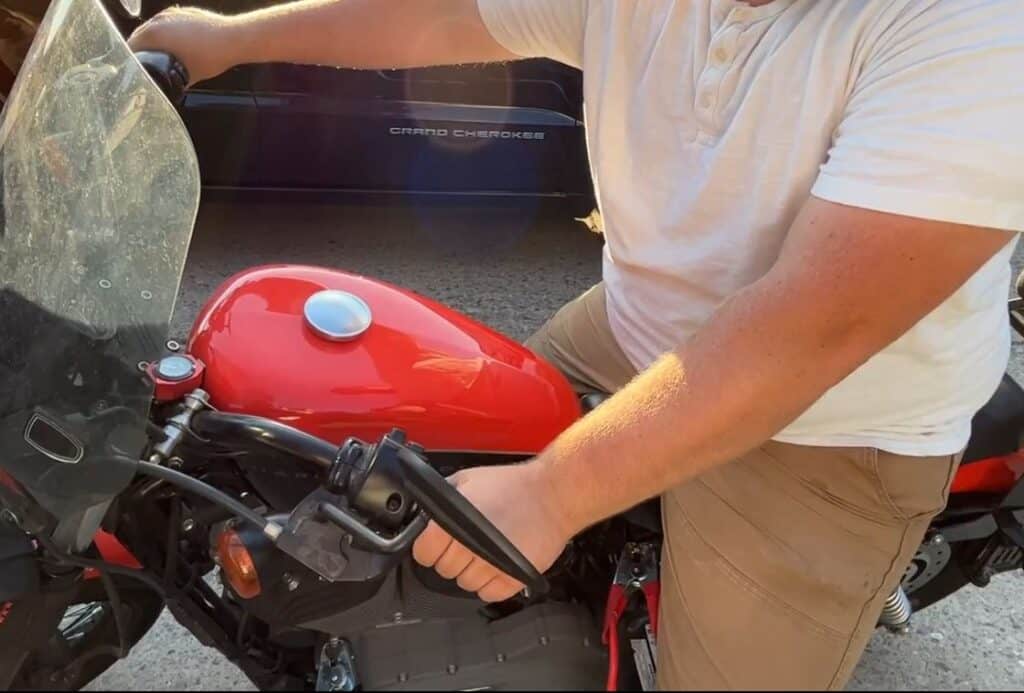
Anyone who has ridden motorcycles or driven manual cars long enough have heard how people will sometimes shift without a clutch.
The clutch is a disc in your motorcycle that is able to connect and disconnect engine torque from the transmission. This connect and disconnect is what can make smooth riding possible. Just like anything on a motorcycle, the clutch can be susceptible to premature wear and even failure.
So, is it bad to shift gears on a motorcycle without using the clutch? Shifting gears without using the clutch is bad for the internal components on a motorcycle. Although clutchless shifting is possible, it could damage the transmission and/or cause premature wear on the clutch and should only be done during emergencies.
So, what is the best way to do the worst kind of a shift? What damage will you cause? And how do you know when you’ve badly damaged something? Motorcycle transmissions can be delicate, and failure will be expensive, so whenever possible, you should do what you can to limit any abnormal wear or unneeded torque from transmission components.
Why You Should Always Use The Clutch

The reason we try to ride safe is so that we can ride for years to come, and we ride carefully so that we can all return home in one piece. This same attitude is worth having as we look at taking care of the mechanics of our motorcycles.
The transmission, for instance, is one of the most important components on a motorcycle. It’s how we get power out of the engine and out to the wheels. The transmission is made up of gears and rings. As the motorcycle upshifts or downshifts, new gear ratios are selected, and synchro gears inside the transmission move to help provide an efficient transfer of power.
With power being output by the engine and input to the transmission, there needs to be a way to connect the output and the input in a way that doesn’t load the engine excessively or transmission too abruptly. The clutch is the middle man that makes shifting possible.
Placed between the output of the crank and input of the transmission, the clutch is a large flat plate that is made up of various different kinds of friction materials. Its goal is to allow the torque that is being output to mesh and smoothly transfer to the any output ratios.
Because the clutch is sort of the middle man in this order of operations, it’s made of a material that will wear down. This means that excessive wear will be placed on the clutch, and not the gears of the transmission where the wear was intended. The transmission is hard to service, and doing repairs on your own inside of your garage will prove to be much harder than you might think, and probably more expensive than you would like.
So, how do you prevent premature transmission failure? Use your clutch. Before I start talking about how to clutch-less shift, you need to know why you shouldn’t. The clutch wasn’t added to the bike just for the fun of it. A motorcycle clutch has a purpose, and should be used whenever possible.
Why Higher RPM’s Will Cause More Damage Without The Clutch
There are going to be two conditions that we will look at. One is what happens inside the transmission under low rpm, and what happens under high rpm. The tachometer measures the rotational speed of the motorcycle. When I say low rpm’s, I’m saying that the rotational speed of the motorcycle crank is low, and the load that the engine is under is generally small.
High rpm conditions mean that the crankshaft of the motorcycle is rotating at a very high speed, and the engine is working very hard so that it can continue to rev.
The best time to do a clutch-less shift is to push the bike into gear as you raise the rpms. This is because although the crankshaft is working very fast, the amount of torque on the transmission gears is low. When you are in low rpm’s, you’ll notice that you won’t be able to put it into another gear, and that’s because the torque from the engine is high.
When running at high rpm, even though the torque that the engine is putting out is low, it’s the speed from the input shaft of the transmission that can cause serious damage to the internals. The greater the difference between the rotating speed of the crankshaft and the rotating speed of the transmission, the more likely it is that you’ll damage something on the inside of the bike while doing a cluth-less shift.
There is no ideal condition where you would have to shift without the clutch, but if it were to happen, you need to make sure that the rotation of the crank is fast enough to lessen the torque that is going out of the rear wheels.
Instances When It’s Okay To Not Use The Clutch
Accidents happen, and sometimes our motorcycles can break and components fail, and the clutch is just another one of those things that can break. The only time a clutch-less shift should be done is in an emergency when the existing clutch cable or hydraulic actuator is broken, but the transmission still has a good clutch.
You can’t shift without the clutch unless the clutch is still in good condition. Even though you aren’t using the clutch lever, you still need the friction plate of the clutch to be in place to hold torque of engine against the rotational plate of the transmission.
In other words, the clutch-less shift will not work if the failure is a worn out or old clutch and will only be assistive if the system used to disengage and re-engage the clutch has failed.
So if you absolutely have to, how do you clutch-less shift? The key to shifting without the clutch is smooth steady movements, and little hesitations.
To outline the process quickly, you need to make sure that your motorcycle is into the high rev range, and right when you feel like it needs to shift, release throttle tension, and use your foot to place the transmission into the next gear.
If you hear any grinding or clashing, stop trying to change gears, and try to rev the engine high up and try again. Be very careful when trying to execute this movement. The clutch is there for a reason, and should be used whenever possible.
If you suspect your clutch has gone bad, you can read our other article here that discusses the most common symptoms of a bad motorcycle clutch.
How You Know You’ve Caused Damage

What’s the worst that can happen? Well the worst that can happen is that a mis-shift into gear can cause a violent clash of the gears and bends, if not breaks, a tooth that is on a gear.
Inside the transmission is a series of gears that allow different ratios to be selected. The gears, and just about everything else inside the transmission is made of a metal. This makes them durable, but this also leaves them vulnerable to scarring or chipping when getting too hot.
The transmission is generally filled with some type of fluid that helps keep the metal from fully contacting other metal; the fluid essentially provides lubrication. Lubricant helps to keep the components cool and spinning smooth. Diagnosing the health of your gears inside the transmission can be done by checking the fluid that is inside the transmission.
Checking transmission fluid isn’t something that is done as often as engine oil, but shouldn’t be a maintenance item that you neglect. If you suspect that some type of internal transmission failure, you should start by checking what the oil inside the transmission looks like.
Color of the fluid isn’t as important as checking to see what is in the fluid. If there are metal fragments inside of the fluid, it’s highly possible that something inside of the transmission has failed and is in need of repair.
Conclusion
The debate over whether it’s harmful to shift gears on a motorcycle without using the clutch remains a topic of contention among riders. Understanding the mechanics of clutchless shifting and its potential impact on the motorcycle’s transmission is crucial for riders seeking to make informed decisions about their shifting habits.
Shifting gears on your motorcycle without using the clutch is not good for your motorcycle and should only be practiced during emergencies. I’ve heard of people practicing this regularly because they’re very good at it, but most of us won’t be. What do you guys think? Is this something you think can be practiced regularly? Do you do it yourself often?
